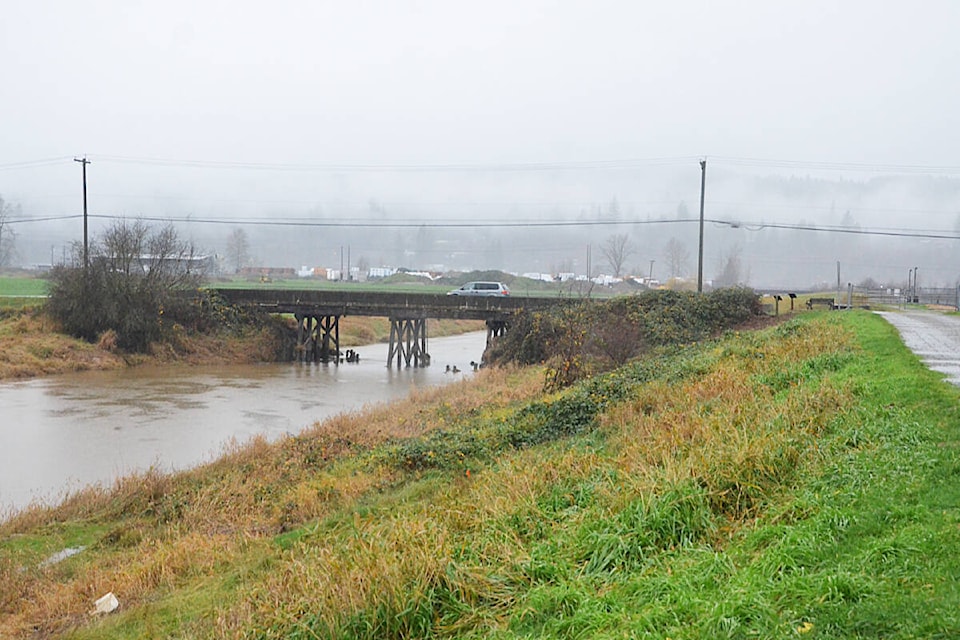Langley Township’s mayor would be happy to have more provincial resources for local diking and flood control efforts, but isn’t eager to give up control to Victoria.
“We certainly look for any assistance we can from the province when it comes to diking,” said Mayor Jack Froese this week, speaking between the arrivals of the second and third major rainstorms to hit the Lower Mainland in a month.
On Nov. 26, Premier John Horgan met with Prime Minister Justin Trudeau, including touring flood-devastated areas of Abbotsford.
Dikes in that community failed during the first of the three recent major rainstorms, all of which were driven by atmospheric rivers.
Horgan pledged to shift the status quo of the last 18 years, in which municipal governments have been in charge of diking and flood control, calling the 2003 change a “bad call” by the Gordon Campbell Liberal government. Local governments have been competing for grants and building upgrades piecemeal ever since.
READ ALSO: B.C. local governments need more help with flood control, Horgan says
“One of the issues previous governments had done is devolved responsibility for diking to municipalities,” Horgan said. “The intent was to give local control and autonomy, and I support that in principle, but the consequence of that is that local rate payers have been asked to take on an extraordinary burden that historically had been handled by the two other orders of government.”
Trudeau made no specific commitments after the meetings.
Froese said that while he welcomes more funding, and said local governments can’t create needed upgrades on their own, he’s not keen to give up all local control.
“We need local input, you can’t just do this from Victoria,” Froese said.
Local governments understand the problems they’re facing, and know “first hand” where the weaknesses in the flood control systems are, said Froese.
Langley Township has two major diking and pumping systems, both of them based on preventing floods near the Fraser River in North Langley.
The Langley diking system is based around the areas of Derby Reach west of Fort Langley. Two pump stations, one on a branch of Yorkson Creek near 102B Avenue, and another near Fort Langley where the Salmon River empties into the Bedford Channel, help control water levels in the floodplains.
To the east, Langley Township partners with Abbotsford in the Glen Valley Diking District, which deals with water on both sides of the municipal boundary.
Langley Township deals with inspections and expenses for the West Wing Dike, which runs along Nathan Creek, while the East Interceptor Dike is Abbotsford’s responsibility, according to Aaron Ruhl, Langley Township’s manager of engineering operations.
Flood control is largely driven by fears of a major Fraser River flood, which typically comes in the early summer and is caused by rapid snow melt in the mountains of the Interior.
This month’s floods have been driven entirely by heavy rain, and have affected wider areas, including properties around local creeks like Salmon River and the Nicomekl.
READ ALSO: Cost of Langley Township flood damage remains unknown
Have a story tip? Email: matthew.claxton@langleyadvancetimes.com
Like us on Facebook and follow us on Twitter.
